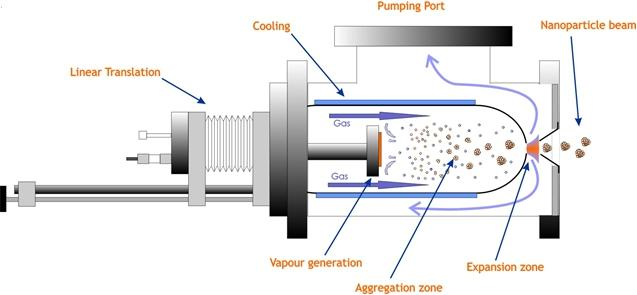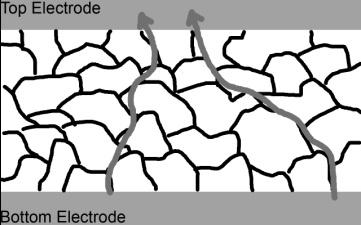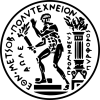NanoARM Project
| Information | |
|---|---|
| Project Title | Nanoparticle Assemblies for Resistive Memories |
| Project Number | 4543 |
| Instrument | GSRT |
| Acronym | NanoARM |

Objectives of the NanoARM Project
NanoARM is research program funded by the General Secretariat for Research and Technology (GSRT) running February 2014 till October 2015. The main objective of this project is focused on Resistive Memories employing different materials and device architectures. The goals of the project are outlined below
- Perform research in the fast growing field of crossbar resistive memory in order to shed light on the physical mechanisms underlying memory operation and demonstrate breakthrough devices having long-term implications in nanoelectronics.
- Investigate new granular material systems for resistive memories exploring the possibility to define the paths in the material where resistive switching will take place. It is proposed the use of metal oxide nanoparticles to form the thin film, the use of embedded metallic nanoparticles in continuous metal oxide films or the use of core shell metal/metal oxide nanoparticles to combine the advantages of both of previous approaches.
- Apply various high resolution Microscopy techniques to identify the morphology and nature of the material. Simulation studies will focus on exploring the behavior of point defects and oxygen at nano-grain boundaries
- Electrical characterization will be used to understand prevailing mechanisms of electrical conduction at different resistance states. In addition nanoscale electrical characterization will be used to map resistive filaments.
- Create a sustainable interdisciplinary research group by bringing together physics and engineering complementary skills and therefore increasing the potential for scientific and technological excellence at international level.


Partners
NanoARM is a scientific collaboration between National Technical University of Athens (NTUA) and the Institute of Nanoscience and Nanotechnology (INN) of the National Centre for Scientific Research “Demokritos” (NCSR).
Relevant publications
- , "Engineering amorphous-crystalline interfaces in TiO2−x/TiO2−y-based bilayer structures for enhanced resistive switching and synaptic properties ", Journal of Applied Physics vol. 120, pp.154501, 2016, doi:10.1063/1.4964872
- , "Low-Power and Highly Uniform 3-b Multilevel Switching in Forming Free TiO2-x-Based RRAM With Embedded Pt Nanocrystals ", IEEE Electron Device Letters vol. 37(7), pp.874–877, 2016, doi:10.1109/LED.2016.2575065
- , "Material and Device Parameters Influencing Multi-Level Resistive Switching of Room Temperature Grown Titanium Oxide Layers", MRS Proceedings vol. 1729, 2015, doi:10.1557/opl.2015.84
- , "Influence of Ti top electrode thickness on the resistive switching properties of forming free and self-rectified TiO2-x thin films", Thin Solid Films vol. In Press, 2014, doi:10.1016/j.tsf.2014.09.041
- , "Memory programming of TiO2-x films by Conductive Atomic Force Microscopy evidencing filamentary resistive switching", Applied Surface Science vol. 332, 2015, doi:10.1016/j.apsusc.2015.01.133
- , "Influence of oxygen content of room temperature TiO2-x deposited films for enhanced resistive switching memory performance", Journal of Applied Physics vol. 115(3), 2014, doi:10.1063/1.4862797
